
With its thick, creamy consistency, Greek yogurt makes an ideal substitute for sour cream and mayonnaise in dips and toppings. You can also use it in baking and cooking, although the effects of heating Greek yogurt can make it tricky to use. When it’s handled properly, Greek yogurt adds a nutritional boost with its rich protein and calcium content, while also adding creaminess and richness to your dish. When you’re cooking with Greek yogurt, knowing what to expect can help you sidestep several common pitfalls that may leave you with a congealed mess rather than a composed dish.
Curdling
As the milk proteins in the yogurt are exposed to high levels of heat, they typically seize up and begin breaking apart. At the earliest stage, your dish will begin looking like it has little lumpy bits of yogurt in it as the yogurt starts curdling. Although the food's still edible, it's not very pretty to look at. Avoid curdled Greek yogurt by letting it warm to room temperature before you start cooking with it. Then temper the yogurt by stirring a small amount of the hot liquid into the yogurt before adding Greek yogurt to your hot pot. This gentle introduction to the heat minimizes your chances of ending up with a curdled mess or having the problem progress to total separation.
Total Separation
Once the milk proteins and whey separate completely, there's no going back, especially if you're making a sauce. One of the ways to avoid separation is to use fuller-fat Greek yogurt. While nonfat Greek yogurt gives you delicious richness when it's used cold, having more fat in the yogurt helps protect the protein from the effects of the heat. Stick with 2 percent milk fat or full-fat Greek yogurt when you're cooking with it. Another way to add a little insurance against separation is to mix your Greek yogurt with cornstarch, using a ratio of roughly 1 teaspoon of cornstarch dissolved in 1 tablespoon of cold water for every 1/3 cup of Greek yogurt.
Killing Good Bacteria
One of the benefits of Greek yogurt is the healthy bacteria that it contains. This beneficial bacteria, which is widely believed to have digestive benefits, is killed off when the yogurt is exposed to high temperatures. Boiling yogurt or baking with it kills beneficial bacteria. Whenever possible, add Greek yogurt toward the end of your cooking time to preserve as much of the healthy bacteria as possible.
Thinning Consistency
That thick, creamy texture that Greek yogurt lovers praise so often typically thins out as the yogurt is exposed to heat. If your dish's consistency is too thin, chilling it for about one hour can help it thicken back up. Likewise, using yogurt with a higher fat content will give you the thicker consistencies. Greek yogurt made with whole milk tends to stay thickest.
Related Articles
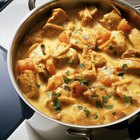
Cooking Yogurt Without Curdling It

Can You Bake Greek Yogurt?

What Is Balkan Yogurt?
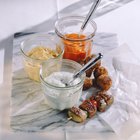
Cooking Yogurt Without Curdling It
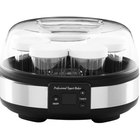
How to Mix Yogurt With Unflavored ...
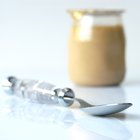
How to Freeze Yogurt Sauce
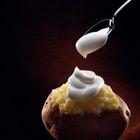
What Can Be Used as a Substitute for ...

Can You Repair Runny Yogurt?

The Amount of Lactose in Yogurt

Does Cooking With Yogurt vs. Sour Cream ...
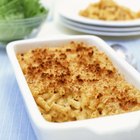
Why Does a Sauce Curdle?

Why Does Milk Curdle When it Is Mixed ...

How to Make Penne Vodka With No Heavy ...
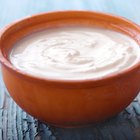
What is Healthier: Greek Yogurt or ...
Nutrition Information for Onken Yogurt

Facts About Yoplait Yogurt
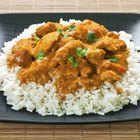
Sources of Calcium in Indian Food

Why Does Milk Curdle When Baking a ...
How to Use Yogurt or Sour Cream Instead ...

How to Keep Coconut Milk From Curdling ...
References
Writer Bio
Caryn Anderson combines extensive behind-the-scenes writing experience with her passion for all things food, fashion, garden and travel. Bitten by the travel bug at the age of 15 after a trip to Europe, Anderson fostered her love of style and fashion while living in New York City and earning her degree at New York University.
Photo Credits
Pixland/Pixland/Getty Images